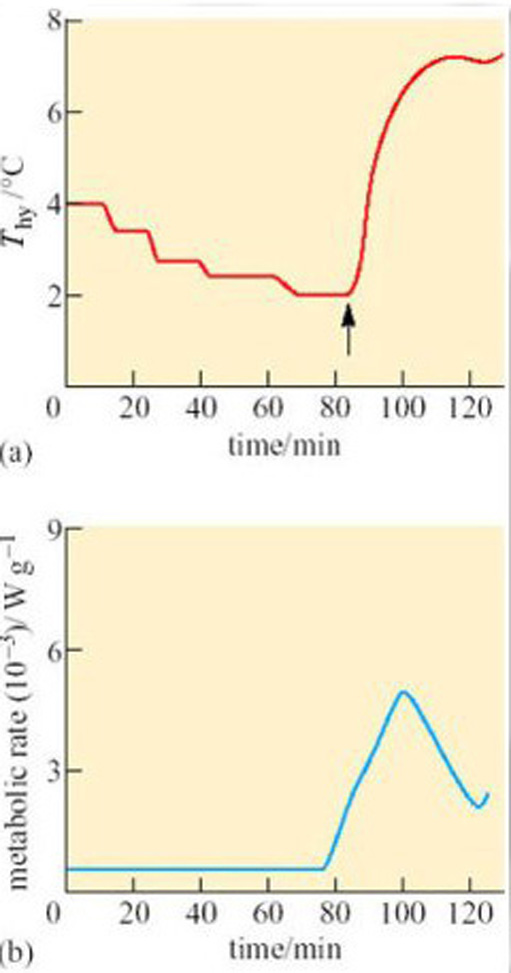
Figure 38 (a) Changes in hypothalamic temperature and (b) metabolic responses of a hibernating eastern chipmunk (Tamias striatus), with a T b of 4.2° C, to stepwise cooling of the POAH (T hy). Cooling of the POAH to about 2.1° C (T alarm) precipitated arousal, but earlier steps produced no effect. Warming the POAH (indicated by the arrow in (a)) at the start of arousal suppressed it within 20 minutes or so
